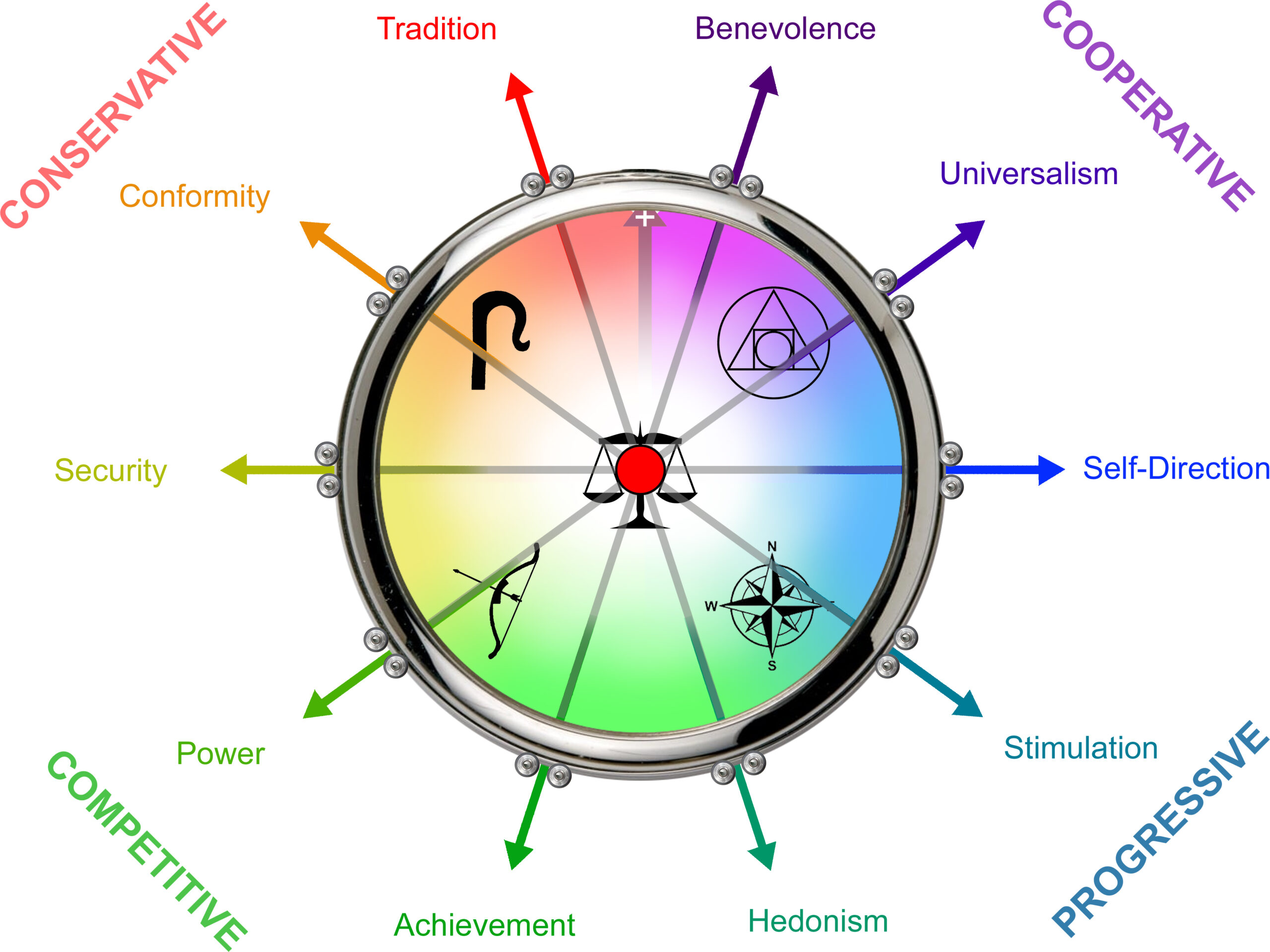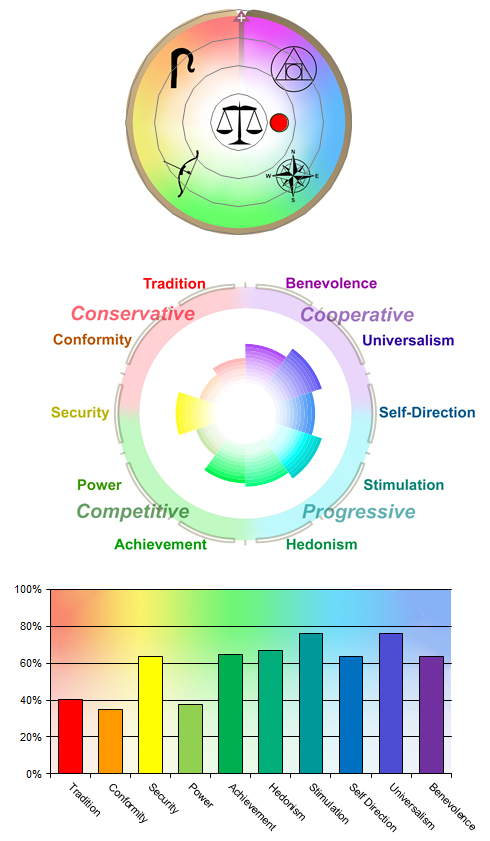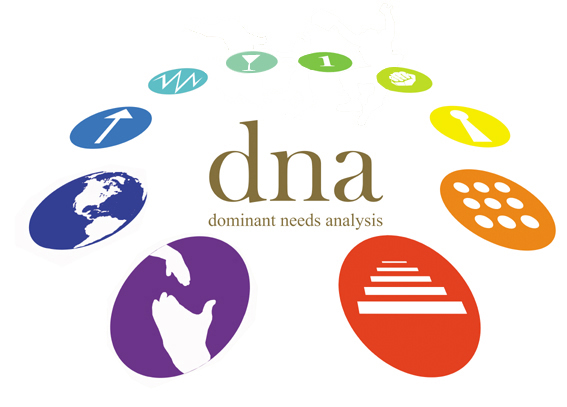Dominant Needs Analysis
a powerful and systematic psychometric

For every action there is a reaction. Perhaps you remember this from physics at school. Whatever we think or do is a reaction to something else: a response to a motive. From a human perspective, what ultimately motivates us is need. Different needs demand different things to satisfy them. We sift, select and pursue these things according to our values. Our values are what make us tick. They are the reason we do what we do.
Motives matter more than actions because the former determines the latter. Two people may do the same thing - say, help an elderly neighbour - but what matters more is why they do it. Are they driven by benevolence or power? Are they just being cooperative or are they seeking to win trust that they may later exploit?
Individuals driven most by progressive and cooperative values are more open, creative, ethical and collaborative. They innovate where others replicate. They inspire confidence and trust. Where others fear to stray from well beaten paths, they lead the way on roads less travelled. Unfortunately, large organisations tend to develop leadership cultures based on competitive values, and so attract individuals with mindsets least well suited to address the challenges of the VUCA world. One only needs to look at governments around the world to see what the consequences of this are.
Dominant Needs Analysis (DNA) has individuals complete a 40 item multiple choice questionnaire, which takes about 10 minutes. This enables the generation of a personal profile describing the relative importance an individual attaches to the ten values shown above. Because our values work as a system - i.e. every one affects every other - and the level of importance we may attach to each is infinitely variable, vast amounts of information about what makes a person tick may be gathered from this easy to collect data. Because our values guide our perceptions, thoughts, decision-making and behaviour in any given environment, the insights available from a DNA report are quite remarkable.

A DNA personal report presents an individual's values profile in three figures. An overall snapshot is provided by a single red marker showing where the balance of their motivational system is in relation to the ten values and five motivational types (represented by the symbols). The philosopher's stone symbol (top right) represents the Philosopher DNA type (associated with Transformational leadership), and the bow symbol (bottom left) represents the Hunter DNA type (associated with Transactional leadership).
The second graphic represents the relative importance a person attaches to the ten values by the size of radial segments: the larger the segment the more important the value. This layout helps easily identify the values conflicts responsible for conflicted thinking, mixed motivations and stress.
The third presents the same information but in a developmental progression from left to right. This helps easily illustrate where areas of development lie. A smooth wave shape is indicative of a motivational system in which energy is harmoniously invested in meeting sympathetic needs. In the example shown it is apparent that security (safety) is both in conflict with the opposing values in the second graphic and a barrier to development in the third. This is likely responsible for reducing the importance of self-direction (independent thought and action), resulting in a disruption of the wave between stimulation (novelty and adventure) and universalism (wisdom) and too much importance being given to achievement (proving oneself to others).
The wording in the report explains what the graphics mean, describes the effects the person's value priorities are having, and explores areas for development.
Because personal values evolved from and represent equivalents that may be inferred in all systems, we can use DNA reports to relate individuals to each other, the roles they perform, the culture and purpose of organisations, and to the markets and environments they operate in.
"My thoughts are that it is a more rational, useful & specific assessment than others I have done. I thought it was particularly useful where the analysis elaborated on challenge areas & posed potential avenues to explore. For example, the commentary in my report really exposed the nub of a few behaviours I have noticed in myself but have never been able to figure out why. The report also got me thinking about where I may fit best within the company to maximise my personal effectiveness. Other assessments I have done include MBTI type 1 and type 2s, career anchors, behavioural competencies. They have all shed light on personal behaviour but the DNA report took it to another level for me. I would score it as a 10/10 & would be happy to elaborate further if that would be helpful."
DNA has been deployed extensively in connection with research and in other projects with which we have been involved. The above feedback came from a leader at Rolls Royce who had been a corporate research participant. Rolls Royce had experienced some initial internal technical difficulties with access to the questionnaire and wanted the few that had gained access to score their DNA report out of 10 to see whether it was worth sorting these problems out. This was the first response. All the others were similarly approving.
If You Have Any Questions
Feel free to email Neil at
neil@songtransformations.com
We are always interested to learn what other organisations are doing and explore how we might be able to help.

